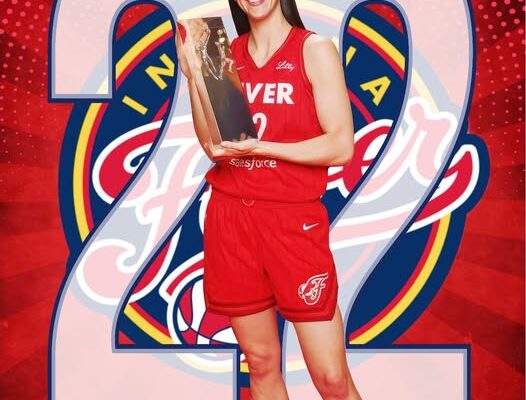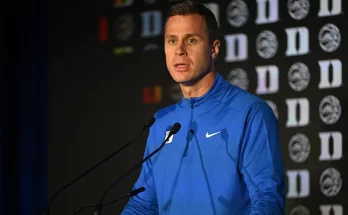The Impact of Caitlin Clark Outweighs the Box Score. Clark participated in 20 of the 23 most-watched WNBA games of the season and received $11 million in endorsements. In terms of assists and points, she also set rookie records
Caitlin Clark’s influence on professional basketball, particularly the WNBA, extends far beyond the stat sheets. While she has achieved historic numbers in her rookie season—setting records for assists and points—her true impact lies in her unparalleled ability to transform the visibility and perception of women’s basketball. Her debut season has coincided with a seismic cultural moment for the league, ushering in unprecedented viewership, media coverage, and financial interest, and igniting a conversation about the value of women’s sports that transcends the hardwood.
At just 22 years old, Clark has already become a household name. Her college career at the University of Iowa laid the groundwork for her professional rise. In college, she shattered scoring records, mesmerized fans with her deep three-pointers, and carried Iowa to back-to-back NCAA championship game appearances. But the magic didn’t stop at the collegiate level. Upon entering the WNBA, she brought that fanfare with her—packing arenas, setting television records, and garnering millions in endorsements, all while maintaining her signature competitive edge and elite playmaking.
The 2025 WNBA season, by many metrics, has become synonymous with Caitlin Clark. She participated in 20 of the 23 most-watched games of the season, a staggering figure that reveals just how pivotal she has become to the league’s popularity. Television networks, corporate sponsors, and even casual fans have gravitated toward her games, treating each appearance as a must-watch event. Her appeal reaches beyond traditional basketball audiences, drawing in younger fans, crossover sports enthusiasts, and even those who previously paid little attention to women’s professional basketball.
Clark’s influence on WNBA viewership is measurable. The games featuring her team, the Indiana Fever, have regularly drawn millions of viewers—numbers that were previously unheard of in league history. This dramatic uptick in ratings has prompted networks to adjust schedules to prioritize her games, while sponsors have scrambled to associate their brands with her meteoric rise. ESPN, ABC, and other platforms have seen historic viewership numbers when she plays, often doubling or tripling their typical audience size. The fervor surrounding her has brought the WNBA into prime-time relevance in a way that mirrors the NBA’s treatment of superstar talent.
Financially, the Clark effect is perhaps even more startling. She has amassed \$11 million in endorsements—an extraordinary figure for a rookie in any professional sport, but especially in women’s basketball. Major brands like Nike, Gatorade, and State Farm have invested heavily in Clark, seeing her as the face of a new era. These endorsements aren’t just a testament to her marketability; they’re a recognition of her broad cultural reach and the business opportunity she presents. This infusion of attention and investment represents a watershed moment for the league, signaling to other corporations that women’s sports, and its stars, can deliver serious returns.
But while the media and business worlds have rallied around Clark, her on-court contributions have been equally historic. She has redefined what it means to be a rookie in the WNBA. By the midway point of her first season, she had already set new rookie records for assists and points, positioning herself among the league’s elite playmakers. Her ability to control the tempo of a game, read defenses, and create scoring opportunities has drawn comparisons to some of the greatest point guards in basketball history. Her statistical impact is amplified by the fact that she’s doing it while facing the league’s toughest defenders, all while adapting to a faster, more physical game than she played in college.
Clark’s influence also manifests in the way teams prepare for her. Opponents have built entire defensive schemes around slowing her down—something typically reserved for the game’s most dominant scorers. Double teams, full-court pressure, and constant physicality have become routine, yet she continues to deliver. This level of defensive attention has also opened up the floor for her teammates, improving their scoring efficiency and turning the Fever into one of the league’s most dynamic offenses. Her vision and passing ability have been particularly exceptional. Whether threading a no-look pass in transition or executing a pick-and-roll with precision, Clark demonstrates a court awareness that belies her age and experience.
While her statistics are impressive, Clark’s most profound impact might be cultural. She has become a symbol of possibility for young athletes, particularly girls who dream of playing professional sports. Her presence in the WNBA has emboldened youth participation in basketball, increased jersey sales, and even influenced how young players model their games. Her pull-up threes and high-IQ passes are now mimicked on playgrounds and in gyms across the country. For many, she represents the idea that women’s basketball isn’t a niche—it’s mainstream, exciting, and worth watching.
Her emergence has also sparked broader discussions about gender equity in sports. Conversations about travel conditions, salary disparities, media coverage, and investment in women’s athletics have been renewed with a sharper, more urgent focus. While these issues have long been points of concern among athletes and advocates, Clark’s platform has helped bring them to the forefront. With each game she plays, the contrast between her growing stardom and the structural limitations of the league becomes more pronounced, prompting fans and media alike to question why the WNBA hasn’t been given the same institutional support as its male counterpart.
Clark’s journey hasn’t been without challenges. She has faced a barrage of criticism and heightened scrutiny, some of which reflects the pressures that come with being the face of a movement. Every missed shot or turnover is dissected, every loss weighed heavily against her potential. But she has consistently handled the pressure with poise, demonstrating resilience and an unwavering commitment to her game. Her humility, combined with fierce competitiveness, has earned the respect of teammates, opponents, and fans alike.
Moreover, Clark has changed the dynamics of team rivalries and storylines within the WNBA. Her matchups with other stars—whether veterans or fellow rookies—have drawn media coverage reminiscent of NBA rivalries. Her clashes with elite defenders like Brittney Sykes or Skylar Diggins-Smith have been appointment viewing, while her budding rivalries with fellow rising stars like Angel Reese have fueled online discourse and built compelling narratives. These storylines, once lacking in widespread mainstream coverage, are now center stage in the sports world thanks to Clark’s involvement.
The ripple effects of Clark’s popularity are also being felt at the grassroots and institutional levels. Youth basketball camps featuring her name sell out in minutes. College programs are seeing increased applications and interest from young athletes inspired by her path. The NCAA itself has benefited from the media spotlight she helped generate, as her college games drew record ratings and packed arenas. Now, her influence is helping to reshape how women’s basketball is marketed at all levels, from middle school tournaments to international competition.
In cities where the Indiana Fever play, ticket sales have skyrocketed. Arenas are reporting sell-outs and record attendance figures whenever the team is in town, and merchandise with her name and number flies off the shelves. Visiting teams have even shifted their marketing strategies to feature Clark in promotional materials, recognizing her as the main attraction. This kind of touring star power has been rare in the WNBA, and Clark’s ability to drive demand across markets demonstrates her unique role as a league ambassador.
There’s also the intangible but undeniable energy that Clark brings to the game. She plays with joy, tenacity, and a sense of showmanship that captivates audiences. Her passion is evident in every possession, and her reactions—whether celebrating a deep three or encouraging a teammate—create moments that resonate with fans. In a sport where connection with the audience is vital, Clark bridges the gap between athlete and viewer effortlessly.
Despite all this, it’s important to recognize that Clark’s story is still unfolding. As she continues to grow and adapt to the professional game, her influence is likely to deepen. She’s already begun to redefine what’s possible for a women’s basketball player in terms of visibility, revenue generation, and cultural resonance. Her impact cannot be measured solely by MVP trophies or stat lines. It must be measured in the millions who now watch women’s basketball with new interest, in the corporate dollars flowing into the league, and in the young fans who now believe they, too, could be the next Caitlin Clark.
In essence, Caitlin Clark represents a convergence of talent, timing, and cultural momentum. She is a once-in-a-generation athlete whose significance transcends her on-court achievements. The WNBA, still a relatively young league, has found in her a star capable of galvanizing widespread interest, challenging outdated perceptions, and creating a more equitable future for women in sports. Her impact, at this early stage, already outweighs the box score—and with each game she plays, her legacy continues to grow.



